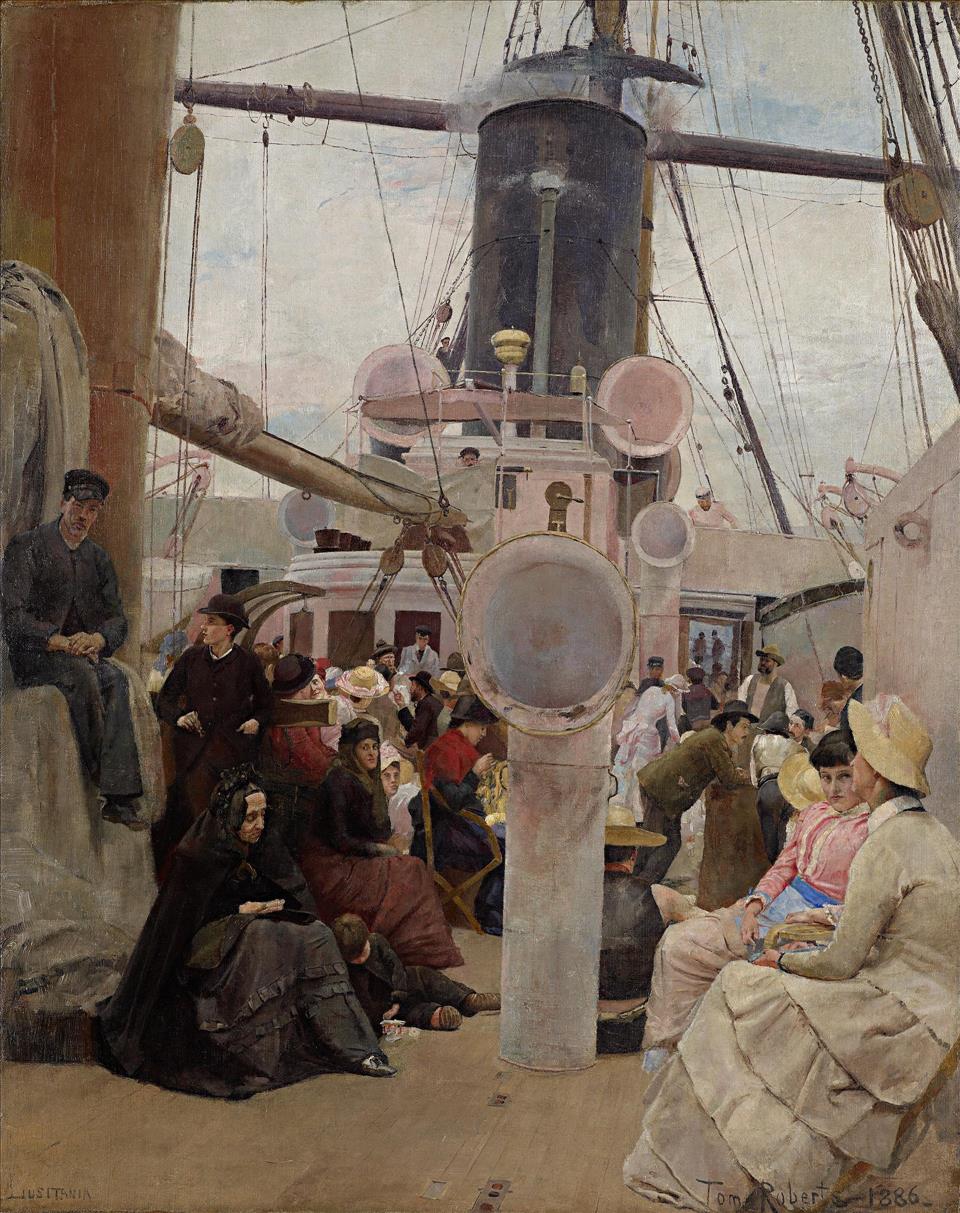(MENAFN- The Conversation) In the digital age our lives are constantly being recorded. Yet, the deliberate act of recording – what we want to remember and how we want to remember – remains popular. Diaries allow us to journal our thoughts and feelings, to work through the challenges we face every day.
This practice is older than you may think. As I write in my recent journal article , some British and Irish girls and young women who migrated to Australia in the mid-1800s used diaries to record their day-to-day lives, document their travel experiences and navigate their emotions.
In the 19th century, around 1.5 million people migrated to Australia, including large numbers of girls who were defined as under the age of 15, and young women in their late teens and early 20s.
Unless she was married, a girl had little other option than to accompany her family to the colonies.
Though few diaries from this demographic survive (I examine only 13 extant sources of about 850 known to survive), they divulge the intricate emotions of migration.
Today, a 24-hour flight from Britain to Australia feels like an eternity, but in the 19th century it took around three months to sail to the continent. Removed from the demands of everyday life, passengers had a lot of time on their hands. Some wrote journals to while away the long days.
An emigrant's thoughts of home, 1859, Marshall Claxton. National Gallery of Victoria Read more: young women's memoirs of migration, dispossession and australian 'unbelonging' demand to be heard
A difficult experience
Migration could be a difficult experience. Passengers endured months at sea in cramped conditions, often fearing for their safety and health, missed those left behind and worried about their futures in a new land.
It is such thoughts and emotions that can be found in surviving migrant girls' diaries.
Aboard the Great Victoria in 1864, 22-year-old isabella adcock had to share cramped cabins with strangers and complained about it in her journal. She had“feelings repugnance to the sleeping accommodations and indeed almost everything in the ship”.
A cabin on board the barque Mary Harrison and ashore in Australia, 1852-54, sketched by T. Warre Harriott. State Library of New South Wales Diaries were sometimes a mechanism to cope with boredom and frustration. jane swan , 13, was impatient to reach Australia in 1853. She was sick of the“very long voyage” and felt“to see the same things, and the same faces, becomes very tiresome”.
Working-class girls were subject to strict conditions. On her voyage to Brisbane in 1863, 14-year-old Welsh girl maria steley noted in her diary the“young women are put Down every night at six O clock” and“are not Allowed to speak to the young men”.
Diary of Maria Steley. John Oxley Library, State Library of Queensland As a working-class teenager, Maria was separated from her family and housed with the single women. Wealthier girls would stay with their families in private cabins.
Among such shared conditions, girls could also make friends. Maria wrote she and her new pals“have many bits of fun more than i thought we would” by“singing and Dancing and playing eney thing we like untill 10 O clock then we go to bed we Play four howrs after we are Loch Down”.
But shipboard travel generated loneliness for many girls. Working-class Scottish woman mary maclean , who was 22 when she voyaged to Sydney in 1865, experienced homesickness, often“Sheding a tear and often Wonder if thay miss one at Home”.
Joy and sadness
Girls also used diaries to record their fears. illness could tear through the close confines of a ship.
sarah raws , 15 when she sailed to Melbourne in 1854, was preoccupied with the proximity of death, including that of two infant boys and the“very sudden” death of a lady in Sarah's own cabin.
emily braine , ten years old when she embarked in 1854, was“frightened” by large waves and rough seas. The risk of shipwreck was low , but the possibility played on Emily's mind.
Towards the end of their journey, some girls were excited to disembark. Sarah Raws rejoiced“"when we first saw land” from the ship's deck. But others experienced a resurgence of homesickness and doubt.
Ally Heathcote's diary from aboard the, s.s. Northumberland, 1874. Museums Victoria, cc by Nearing Melbourne in 1874, 19-year-old ally heathcote had feelings“of a mingled character, joy and sadness”. She felt torn between her old life in England and her new life in Victoria.
Ally's writings helped her deal with these“mingled” feelings. Her diary, she wrote,
Most girls concluded their diaries at the end of their voyage before they started on a new life. Some made copies and sent the account“home” to Britain for family and friends to peruse.
The diary became a record and a keepsake of a life-changing journey.
Girls' shipboard diaries reveal the complex and varied emotions of people from the past and provide insight into the human experience of migration. These sources centre girls in the migration narrative, giving a voice to an often-overlooked group.
It is a shame so few survive.
Read more: handwritten diaries may feel old fashioned, but they offer insights that digital diaries just can't match
























Comments
No comment